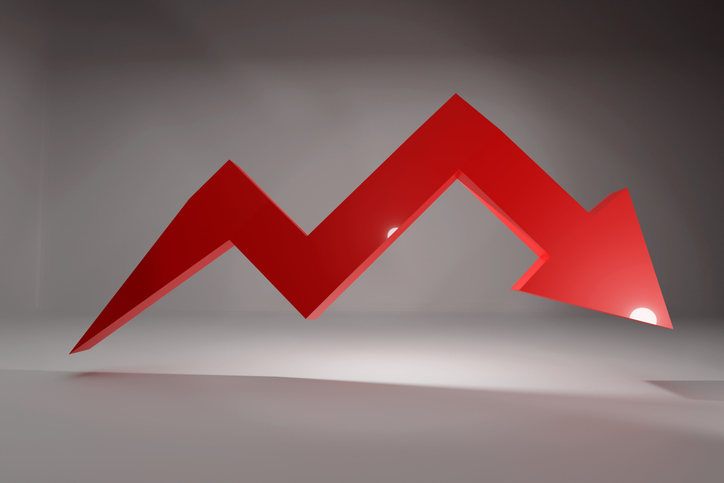How Dangerous Is the U.S. Debt?
Truth is, nobody really knows -- yet. Meanwhile, economists are turning the dismal science into a confusing one, too.

For economics to be practical, it needs to provide answers to the pressing questions policymakers ask. Two of the most important today: Does growth nose-dive in the face of heavy national debt? Can investors recognize a bubble before it pops?
But recent history offers little assurance that economics — or at least economists — can provide reliable guidance. In fact, events in the past month seem to indicate that this field of study provokes more debate than direction.
President Reagan's federal budget director, David Stockman, is currently promoting his most recent book, a 700-page tome entitled The Great Deformation: The Corruption of Capitalism in America. Stockman is among the many who rank the mountain of federal debt as Public Enemy Number One. In his book, he blames the buildup on both parties in Congress — Democrats, pushing more social spending, and Republicans, boosting defense and big tax cuts — plus nearly every occupant of the Oval Office from Richard Nixon to Barack Obama, including his former boss. The one exception is Bill Clinton.

Sign up for Kiplinger’s Free E-Newsletters
Profit and prosper with the best of expert advice on investing, taxes, retirement, personal finance and more - straight to your e-mail.
Profit and prosper with the best of expert advice - straight to your e-mail.
But in 1981, while head of the White House Office of Management and Budget, Stockman was a primary architect of Reagan's supply-side economic policies and tax cuts, and made the point that "none of us really understand what's going on with all these numbers."
More recently, economists Carmen Reinhart and Kenneth Rogoff coauthored an influential book concluding that when public debt reaches a tipping point of around 90% of gross domestic product, economic growth will settle in close to zero. To come to their conclusion, the two economists drew heavily on extensive data from across the world. But it turns out that the pair miscalculated some numbers and omitted others.
The revelation is casting doubt on the wisdom of and need for fiscal policies aimed at sharply reducing the federal deficit (including the current budget sequestration). Critics of the Reinhart-Rogoff paradigm argue that high debt doesn't, in fact, curb growth, but that slow growth results in rising deficits and debt. Despite the disagreement, policy decisions about national security, medical research, child care and Medicare are being made with the belief that debt must be reined in immediately.
There's similar confusion about whether the country is experiencing new and dangerous asset bubbles. Stockman, for one, disturbingly asserts that the easy money being pumped out by the Federal Reserve is fueling a surge in stock prices by investors who feel secure that the party will go on. But Stockman cautions the party will end badly, with another stock market collapse coming soon — an encore of 2000's dot.com bust, or worse, of the broader market dive in 2008, with investors again experiencing huge declines in their 401(k) balances.
Former Treasury Secretary Lawrence Summers disagrees. Asked whether high share prices are disconnected from the actual economy, Summers says no, that the stock market is "forward-looking." Moreover, he points out that in addition to the rising stock market, climbing home prices signal a recovery economy. Fed Chairman Ben Bernanke agrees with him. Stockman, on the other hand, says both phenomena are bubbles waiting to pop.
Theirs is perhaps the critical economic debate today. If Stockman proves correct, stock prices will collapse, taking the economy down with the market. If Bernanke and Summers are right, the Fed's policies are nurturing economic growth.
Unfortunately, recent economic reports aren't providing a clear-cut judgment about who is right. For example, the latest employment data provide ammunition to both sides. Upward revisions show strong gains in January and February, but woefully meager growth in March.
And there are signs of bubbles. The issuance of commercial mortgages packaged as bonds and sold to investors is on track to hit $100 billion this year. While well shy of the record of $250 billion bundled and sold in 2007, the 2013 total may be triple that of a year ago. Bankers are also starting to bundle home mortgages to sell to investors again. Meanwhile, federal regulators are expressing concern about the boom in mortgage real estate investment trusts, which are tapping low interest rates and delivering 15% returns to eager investors. These REITs are not backed by actual property such as offices or hotels but by mortgages, whose value can sour quickly if and when interest rates begin to rise.
In both debates — over the role of federal debt and economic growth, and over the likelihood of dangerous asset bubbles developing — the arguments made on both sides appear to have merit. They are well articulated by people with substantial experience and expertise. But economics being at least as much art as it is science, there's simply no way to know which side is right — or even if either is right. Only time will provide the answer. Sometime in 2014, it may become obvious. In the meantime, those who prefer their economics to be practical, to provide clear-cut guidelines, will remain frustrated.
Get Kiplinger Today newsletter — free
Profit and prosper with the best of Kiplinger's advice on investing, taxes, retirement, personal finance and much more. Delivered daily. Enter your email in the box and click Sign Me Up.

-
 33 Stocks That Could Rally 50% or More This Year
33 Stocks That Could Rally 50% or More This YearAnalysts say these S&P 500 stocks have at least 50% price upside over the next year or so.
By Dan Burrows
-
 Stock Market Today: Dow Drops 971 Points as Powell Pressure Ramps Up
Stock Market Today: Dow Drops 971 Points as Powell Pressure Ramps UpPresident Trump is increasing his attacks against Jerome Powell, insisting the Fed chair cut interest rates.
By Karee Venema
-
 The Economic Impact of the US-China Trade War
The Economic Impact of the US-China Trade WarThe Letter The US-China trade war will impact US consumers and business. The decoupling process could be messy.
By David Payne
-
 AI Heads to Washington
AI Heads to WashingtonThe Kiplinger Letter There’s big opportunity for AI tools that analyze MRIs and other medical images. But also big challenges that clinicians and companies will have to overcome.
By John Miley
-
 The AI Doctor Coming to Read Your Test Results
The AI Doctor Coming to Read Your Test ResultsThe Kiplinger Letter There’s big opportunity for AI tools that analyze CAT scans, MRIs and other medical images. But there are also big challenges that human clinicians and tech companies will have to overcome.
By John Miley
-
 The New Space Age Takes Off
The New Space Age Takes OffThe Kiplinger Letter From fast broadband to SOS texting, space has never been more embedded in peoples’ lives. The future is even more exciting for rockets, satellites and emerging space tech.
By John Miley
-
 Rising AI Demand Stokes Undersea Investments
Rising AI Demand Stokes Undersea InvestmentsThe Kiplinger Letter As demand soars for AI, there’s a need to transport huge amounts of data across oceans. Tech giants have big plans for new submarine cables, including the longest ever.
By John Miley
-
 What DOGE is Doing Now
What DOGE is Doing NowThe Kiplinger Letter As Musk's DOGE pursues its ambitious agenda, uncertainty and legal challenges are mounting — causing frustration for Trump.
By Matthew Housiaux
-
 A Move Away From Free Trade
A Move Away From Free TradeThe Letter President Trump says long-term gain will be worth short-term pain, but the pain could be significant this year.
By David Payne
-
 Trump’s Whirlwind Month of Crypto Moves
Trump’s Whirlwind Month of Crypto MovesThe Kiplinger Letter The Trump administration wants to strengthen U.S. leadership in the cryptocurrency industry by providing regulatory clarity.
By Rodrigo Sermeño